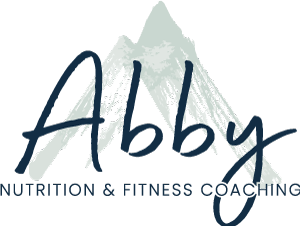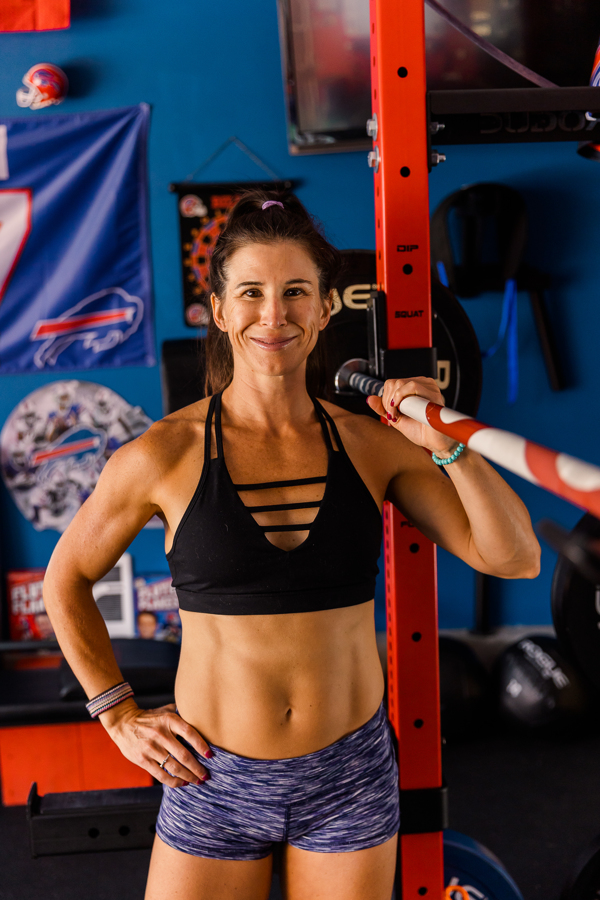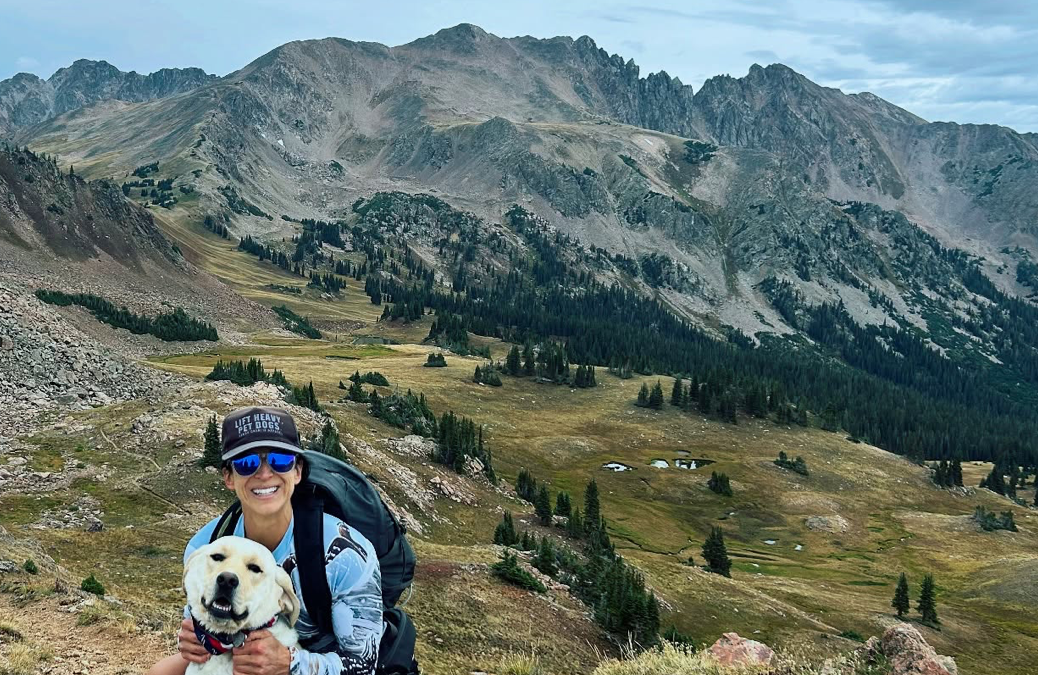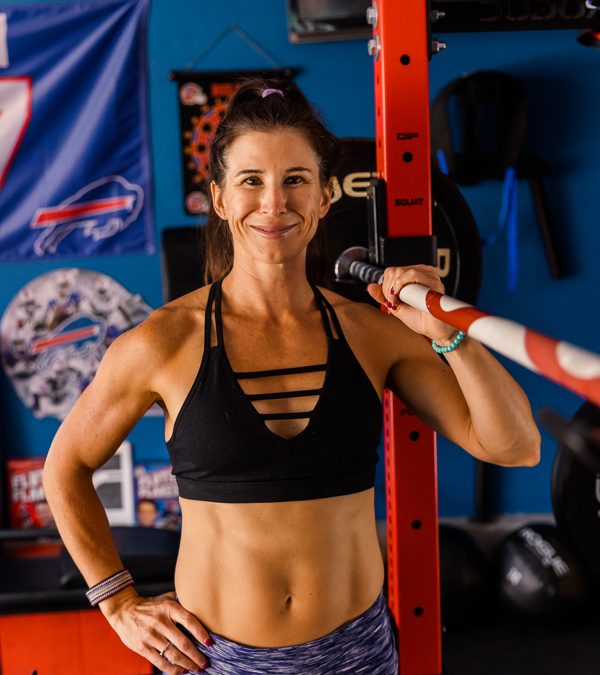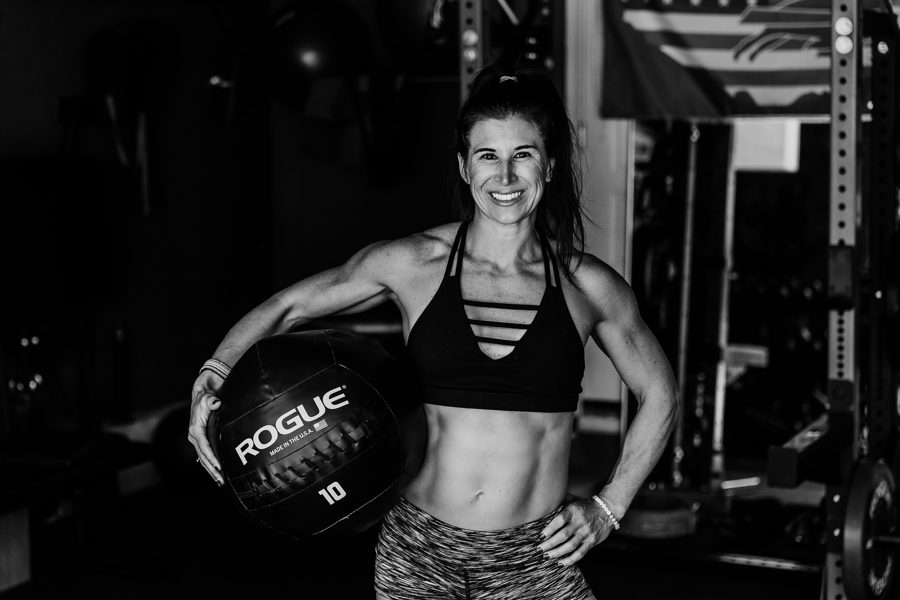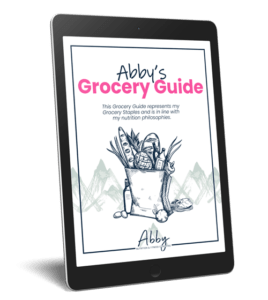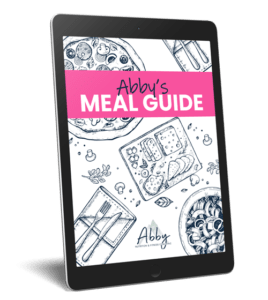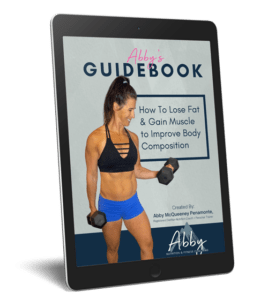Let’s be real… tracking macros is an incredible tool.
After all, I built an entire business, Coaching with Abby, on coaching women on how to fuel adequately so that their bodies finally reflect their hard work in the gym by periodizing their nutrition and tracking their calories and macronutrients (carbohydrates, protein, fat, and fiber).
And to be honest, tracking macros (and learning how to lift) truly SAVED MY LIFE over a decade ago. I used to compete in 100-mile mountain ultra-marathons while silently struggling with an eating disorder. I completely trashed my body, and was forced to retire from ultra-running, and decided to try lifting weights.
When I began lifting, I quickly learned that in order to move heavy weights and be competitive, my nutrition had to change. Trust me, I learned the hard way back in 2014 when I was squatting at the gym in the morning and after having no breakfast, I realized I barely had energy to finish the workout, I was dizzy and lightheaded, and felt weak. At first I thought something was wrong with me, but really it was me needing to tweak my nutrition and macros.
So… I worked on introducing more carbs into my diet using flexible dieting and tracking my macros. I’d been over-training & under-fueling for a long time. I learned that I actually needed way more fuel than I was allowing myself to eat. And I realized that carbs aren’t “bad” & that they are actually an important fuel source for improving strength & body composition, and that tracking macros really can actually improve your relationship with food.
I finally found freedom and clarity around EXACTLY how many carbs I was actually able to eat each day and still meet my goal of improving my physique. Turns out I could have upwards of 350 g of carbs per day and still see progress. Actually it was vital to me seeing progress.
Tracking macros is like tracking your financial budget. Can you save money without looking at your budget? Sure. But you’ll probably get there quicker knowing the data.
The same goes for tracking macros. Can you achieve your goals without tracking? Of course. But you’ll probably be more efficient and effective with knowing how much you eat and how much fuel you actually need. And it allows you to balance all foods into your diet.
I teach my clients that tracking shouldn’t come from a place of restriction or deprivation. If you’re obsessing and stressing over numbers, it usually comes from a place of trying to eat too little or trying to follow a cookie cutter program that emphasizes too low of calories or macro goals.
And if you’ve ever tracked macros and thought: “I just want to eat normally and still hit my goals…”
You’re not alone and you’re not wrong.
Here’s the truth: Most people don’t want to track forever. And you don’t have to.
But you do need a strategy that helps you stay consistent without constantly logging your food.
Here’s the step-by-step process we teach our clients in The Strong & Sculpted Method to transition away from tracking macros while still hitting their goals (this is done in Phase 3: Forever Plan):
Step 1: Figure out the macro targets that actually work for YOU- (Newsflash: most people never get this far because they rely on a random online calculator instead of a coach or real data).
Step 2: Build meals that fit those macros- This is where you start connecting the dots between numbers and real food. You’ll learn what a balanced breakfast actually looks like for your body and goals, not just a general rule.
Step 3: Create a rotation of go-to meals- This is the game changer. Build a simple list of 3–5 meals per meal type (breakfast, lunch, dinner, snacks) that you know hit close to your target macros. That way, you can mix and match, no calculator required.
Boom. Now you’ve got structure without tracking, freedom without guesswork, and results without burnout.
It’s not magic.
It’s just smarter nutrition built around your lifestyle.
P.S. You can stop tracking without falling off the wagon. You just need the right system to replace it.
